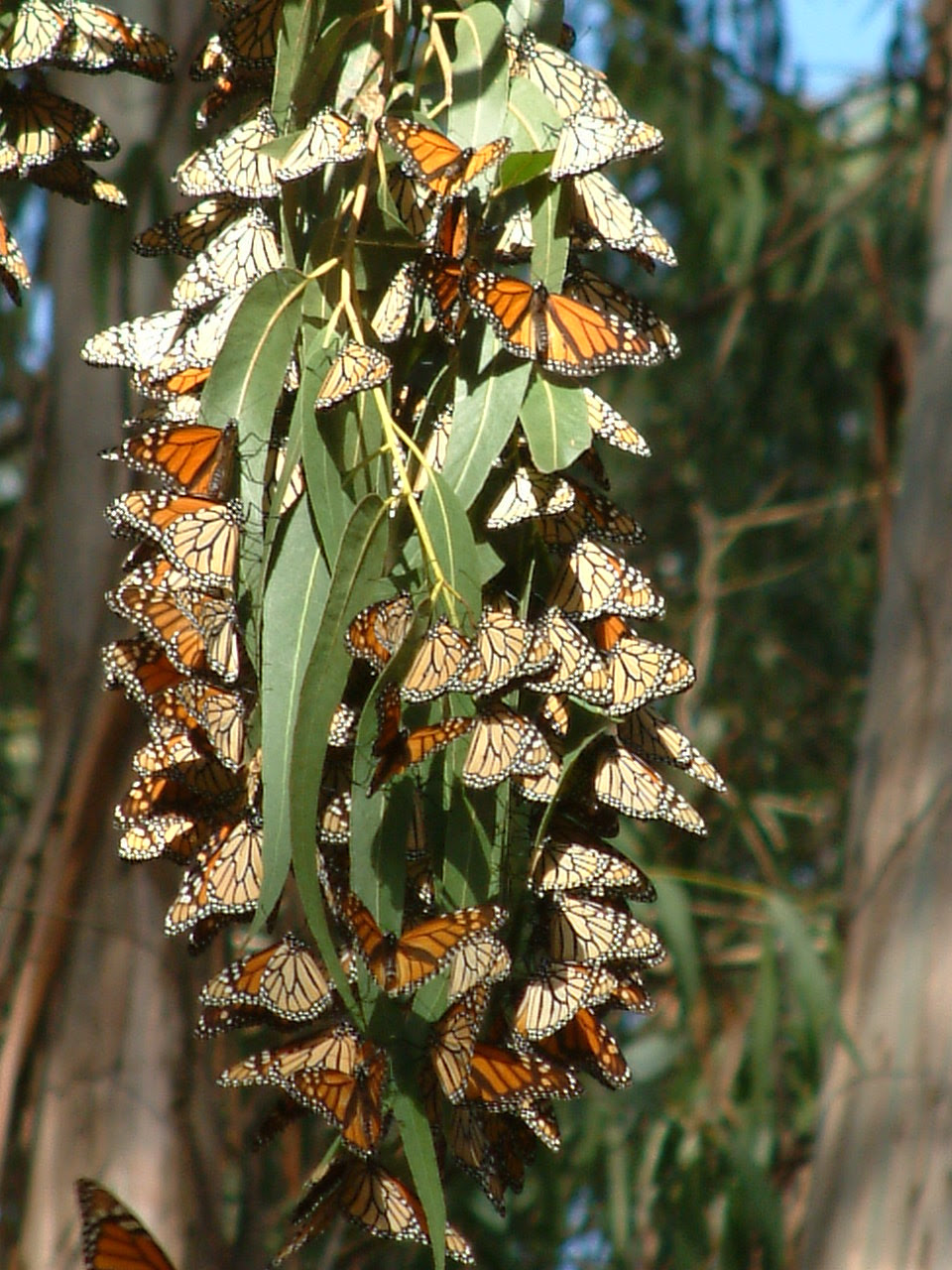
photograph courtesy of Mike Guth
This is the first in a series of articles about the Moran Lake Butterfly Habitat. This article will introduce aspects of this incredible resource. The next article will discuss challenges facing the habitat and the delays that have occurred in implementing mitigations, including tree plantings to compensate for losses due to development, that were required in project CEQA approvals but have been inexorably delayed.
Moran Lake County Park is located adjacent to Pleasure Point in the mid-County coastal area. Although called a lake, Moran Lake is a coastal lagoon that seasonally connects to Monterey Bay. Moran Lake, like other coastal lagoons, is a body of saline water impounded by a barrier beach, with a seasonal inlet/outlet. Just inland from the County Park is land owned by the County Sanitation District, and the natural lands outside the Sanitation District facility are managed by County Parks.
The monarch habitat at Moran Lake currently supports the third largest overwintering population of monarch butterflies in Santa Cruz County, and a considerable portion (5%) of the western migratory population. The wintering population at Moran Lake is typically more than twice the size of any other such population in the mid-county area. Wintering populations of similar magnitude to that at Moran Lake occur only at about 25 other sites distributed along the California coastline from north of San Francisco to San Diego.
The life history of the monarch butterfly can be divided into two temporarily defined periods: a spring/summer reproductive period and a fall/winter non-reproductive (wintering period). In the fall, the adult butterflies that are produced during the latter part of summer migrate to wintering habitats in coastal California or central Mexico to spend the winter months. The availability of overwintering habitats is particularly important for monarchs, since they are unable to survive prolonged periods of freezing temperatures in any stage of their life cycle. Monarch survival through the wintering period is primarily a function of being able to find a wind protected habitat, with suitable microclimatic conditions. A coastal promontory, which allows for onshore (non-freezing) air flow from three sides, along with layers of wind break trees, functions as such a habitat.
The Moran habitat suffered severe tree loss in the late 90s due to a number of factors. Among those was unpermitted tree cutting, sometimes in the Park itself, by those desiring more open views down the lagoon to the ocean. Notably, this sometimes occurred just prior to a house being listed for sale. A feature of the lot layouts is that while much, or most, of the trees are on public property, a significant number of both windbreak and roost trees are on private property. The habitat trees, which include trees providing the layers of windbreak as well as actual fall and winter roost site trees, are protected under numerous laws.
The County adopted the Moran Lake Monarch Butterfly Habitat Management Plan in 2011 after over a decade of hard work by community members interested in preserving this resource, and with significant support from 1st District Supervisor Jan Beautz, and later also from Supervisor John Leopold. The County Redevelopment Agency also contributed to this effort. However, these earlier efforts have not been fully carried forward to tangible improvements in the area. County Parks is currently doing work on a Park Improvement Plan for Moran Lake, and it is not clear that butterfly habitat conservation is being fully considered. And, as we will discuss in Part 2 of this series, trees that were required to be planted in the Park to mitigate for tree losses to development (as part of the CEQA approvals), have been repeatedly delayed by the County to the point of meriting action.